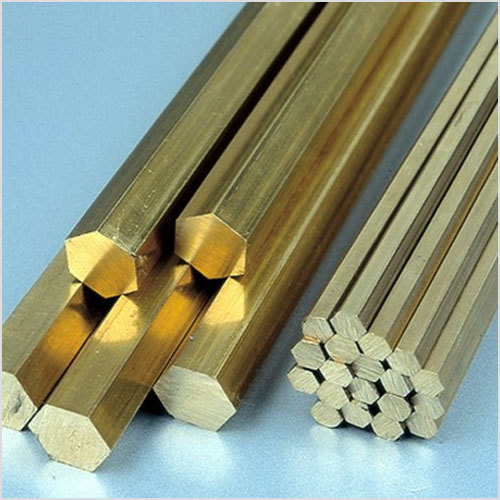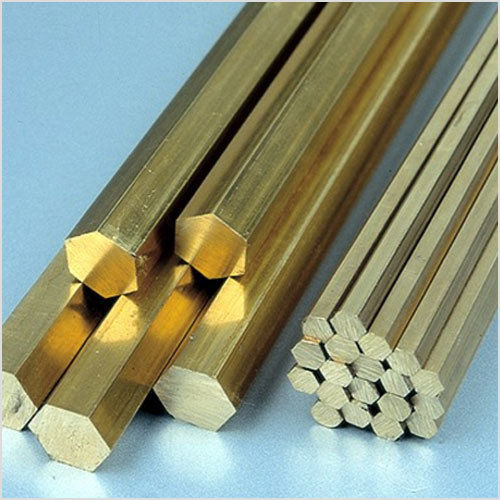BS 2874 CZ114 or CZ115 High Tensil Leaded Brass
Product Details:
- Type High Tensile Leaded Brass
- Material Brass
- Grade BS 2874 CZ114 or CZ115
- Tolerance 0.05 mm
- Alloy CZ114 / CZ115
- Temper Hard, Half Hard, Soft
- Length 200 mm to 1200 mm
- Click to View more
BS 2874 CZ114 or CZ115 High Tensil Leaded Brass Price And Quantity
- 500 Kilograms
- 350.00 - 550.00 INR/Kilograms
BS 2874 CZ114 or CZ115 High Tensil Leaded Brass Product Specifications
- BS 2874 CZ114 or CZ115
- 10 mm to 100 mm
- Brass
- 0.05 mm
- Round, Hex, Square Bar
- Hard, Half Hard, Soft
- Request specific weight per size
- 200 mm to 1200 mm
- Golden Yellow
- High Tensile Leaded Brass
- CZ114 / CZ115
BS 2874 CZ114 or CZ115 High Tensil Leaded Brass Trade Information
- 50000 Kilograms Per Month
- 3 Week
Product Description
BS 2874 CZ114 or CZ115 High Tensil Leaded Brass
We are one of the leading manufacturers, exporters and suppliers of a premium quality assortment of High Tensile Brass Rods, Brass Extrusion Rods. Offered in different sizes, thicknesses and grades, these are valued for their excellent performance, high conductivity, durability, reliable operation and corrosion resistance. At par with the prerequisite industry standards, our High Tensile Brass Rods can be purchased by clients in standard & customized specifications and at cost effective rates.
| Specification : | |
| High Tensile Brass |
|
Specifics :
BS:1001
HT12472
IS:320 l & ll
| Chemical Requirements | HT1 | HT2 | |||
| Copper | 56.0 - 60.0% | 56.0 - 61.0% | |||
| Lead | 0.20 to 1.50% | 0.50 to 1.50% | |||
| Iron | 0.20 to 1.25% | 0.20 to 1.50% | |||
| Tin | 0.20 to 1.0% | 1.0% max | |||
| Aluminum | 0.2% max | 0.30 to 2% | |||
| Manganese | 0.25 - 2.0% | 0.50-2.0% | |||
| Total Imp. | 0.50% max | 0.50% max | |||
| Zinc | Remainder | Remainder | |||
| Physical Properties | |||||
| Condition | Size | T.S. MPa | EL% Min | T.S. MPa | EL% Min |
| As manufactured | All Size | 430 min | 20% | 460 min | 20% |
| Cold-worked & Stress | 10-40 | 480 min | 12% | 520 min | 12% |
| Relieved | 40 above | 500 min | 15% | ||
| Fabrication Properties | |||||
| Capacity for being | |||||
| Cold formed | Poor | Fair | |||
| Hot worked | Good | Good | |||
| Machinability Rating | 30% | 30% | |||
| Resistance to Corrosion | Excellent | Excellent | |||
| Suitability for soldering | Excellent | Fair | |||
| Uses | |||||
| HT1 is suitable for Soldering | |||||
| Ht2 is suitable for Machining | |||||
Outstanding Machinability and Strength
CZ114 and CZ115 leaded brass alloys boast up to 90% machinability, making them highly preferred for precision machining. With tensile strength ranging from 410 to 590 MPa and elongation between 10% and 25%, these metals provide a balanced combination of robustness and workable flexibility, ideal for complex component manufacturing.
Versatile Industrial Applications
Thanks to their propertiesgood corrosion resistance and thermal conductivity around 120 W/mKthese alloys are used extensively in the automotive, hydraulic, and marine sectors. The stable, smooth, and bright finish ensures aesthetic appeal, while their durability suits demanding engineering environments.
FAQs of BS 2874 CZ114 or CZ115 High Tensil Leaded Brass:
Q: How does BS 2874 CZ114 or CZ115 brass benefit manufacturing processes?
A: This high tensile leaded brass offers excellent machinability (90% rating), reducing machining time and tool wear. Its balanced strength and ductility also support complex shaping, making it suitable for precision engineering and mass production.Q: What are the typical usage applications of CZ114 or CZ115 high tensile brass?
A: These alloys are commonly used in automotive components, hydraulic fittings, marine hardware, and various general engineering parts that require high strength, corrosion resistance, and ease of machining.Q: When should CZ114 or CZ115 be chosen over standard brass alloys?
A: Select CZ114 or CZ115 when your application demands higher tensile strength, greater machinability, and enhanced wear resistanceespecially for parts subjected to mechanical stress or needing accurate tolerances.Q: Where are CZ114 or CZ115 brass bars and rods available from?
A: Manufacturers, suppliers, and exporters in India offer CZ114/CZ115 bars and rods in various lengths, diameters, and tempers. These can be sourced with round, hex, or square cross-sections as required.Q: What is the process of manufacturing CZ114 or CZ115 high tensile leaded brass?
A: Production typically involves alloying copper and zinc with a specified lead content (1.7%2.5%), followed by casting, rolling or extrusion, and precision finishing to deliver round, hex, or square bars that adhere to BS 2874 standards with tight tolerances.Q: How does the lead content in CZ114 or CZ115 affect its performance?
A: The controlled lead content (1.7%2.5%) enhances machinability without compromising strength or corrosion resistance, resulting in smoother finishes and longer tool life during manufacturing.
Price:
- 50
- 100
- 200
- 250
- 500
- 1000+
Other Products in 'High Tensile Leaded Brass Rod' category
 |
METAL ALLOYS CORPORATION
All Rights Reserved.(Terms of Use) Developed and Managed by Infocom Network Private Limited. |












